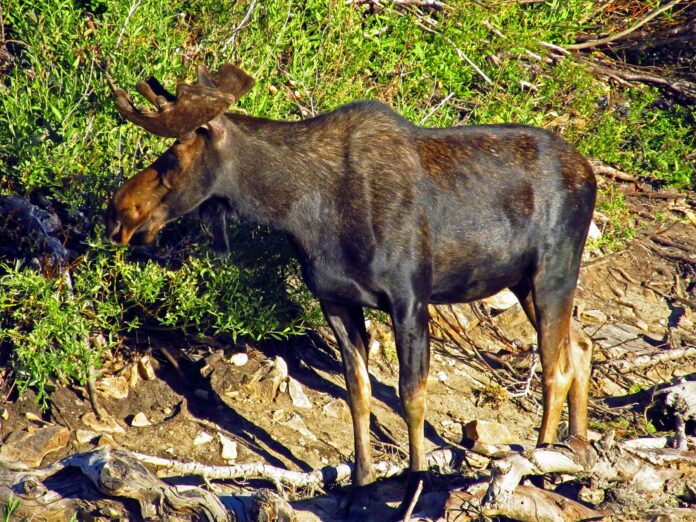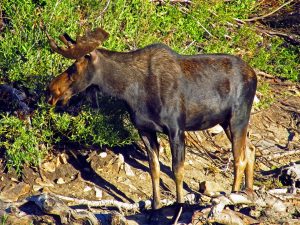
By Hannes Thum

People tend to be scared of certain animals. Though many of us are far removed from the old days (I’m talking tens of thousands of years ago), when we lived in caves, were pretty low on the food chain, and had a life expectancy in the teens, our brains have not forgotten the dangers posed by creatures that roam the wild just outside of our doors.
Our local hills are full of animals that are nice to view from afar but that could be distressing to encounter up close. Some notable examples from here in the Wood River Valley might, depending on your perspective, include the American black bear, the mountain lion, or even the hulking, lumbering moose.
These are creatures that people have been known to run from and creatures that can certainly be dangerous.
The moose, in particular, is a species that people rightfully give a wide berth to. Moose are pretty neat to observe, and I am regularly impressed by the strange places that I encounter moose in Idaho (like the one I saw meandering through a dry sagebrush hillside at almost 9,000 feet above Wlidhorse Canyon—a high and lonesome place for a creature usually associated with low riparian areas). But, they are exceptionally unpredictable and their way of defending themselves seems to be to charge headlong and somewhat mindlessly into whatever is upsetting them.
I once watched a bull moose charge and crumple the door panels of a parked, unoccupied minivan in a suburban neighborhood. I felt grateful to be across the street, but quickly found myself wishing I was clear across town.
As a side note, many encounters with these critters end in the death of the non-human: you may remember the black bear trapped and killed by Idaho Fish and Game up the North Fork two summers ago after several tense interactions with people in campgrounds (“one of the campers was awakened after feeling pressure on her right foot from the bear’s mouth” was the memorable quote in the newspaper that week, along with, “the sleeping bag was not damaged, but it did leave some saliva on the sleeping bag”).
However, it is fascinating to realize that size alone does not make an animal dangerous. The pine marten, which is smaller than most folks’ house cats, is a terrifying beast to face up close. The local wolverine, though rarely encountered and maybe a foot and a half (at the most!) tall at the shoulder, is legendary for its temperamental and aggressive reaction to threats—plus, it has giant claws. Lucky for us, most of us will never get close to one.
Then, there’s the ultra-small. And ultra-dangerous. A fact that many of my students find fascinating: the most deadly creature on the planet as far as numbers of humans killed worldwide per year is the diminutive, pesky mosquito. They carry a lot of infectious and deadly diseases in that tiny little package.
Hannes Thum is a Wood River Valley native and has spent most of his life exploring what our local ecosystems have to offer. He currently teaches science at Sun Valley Community School


